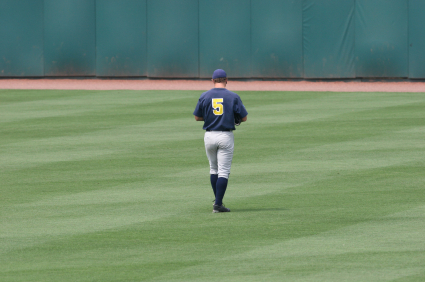The Situation: Runner on third, 2 outs, bottom of the 8th. The game is tied, and the right-handed 3-hitter is at the plate, with a 1-2 count.
The Play: The outfield has been playing the 3-hitter deep all game. The guy is a beast, and everyone knows it. But he also shortens up with 2 strikes and doesn’t strike out a lot. Still, the right fielder holds his position because he doesn’t want a ball to get hit over his head. The pitcher throws a curveball that breaks low and away, and the hitter reaches out and pokes it toward right.
The Outcome: The right fielder crashes hard, but has to pull up as the ball falls in front of him for a base hit. The run scores, and the offense takes the lead.
What Went Wrong?
In the college game, hitters are always told to fight with 2 strikes and put the ball in play. This is especially true in big RBI situations. No matter how powerful or intimidating a hitter is, the defense has to recognize that the hitter will change his approach with 2 strikes.
In this situation, the most important runner is the one on 3rd. The defense cannot let him score, so they have to do everything they can to prevent a single. It doesn’t matter if a ball gets over the right fielder’s head for a double. The chances of that happening are slimmer than the chances of a bleeder being dumped into right. You have to play the odds. In two strike situations, the outfield has to adjust. Usually this means taking a few (and sometimes even more than a few) steps in, and shading the push side.
The reason for this shift is because it is understood that the hitter is more likely to take an off-balance swing to protect the strike zone. The chances of him driving a ball the other way are lower than the chances that he will try just to get a base-knock to drive in the run. Baseball is a game of odds, and you have to be willing to take a chance in order to give yourself the best opportunity to make a play.
As a fielder, understand that the situation, and your positioning, changes pitch-by-pitch. Positioning sometimes doesn’t depend on the hitter at all, but on the demands of the situation. Understand what is important at that point in the game. Know how the situation changes after every pitch. Put yourself in the best position to make the play by using your brain. Think the game.







